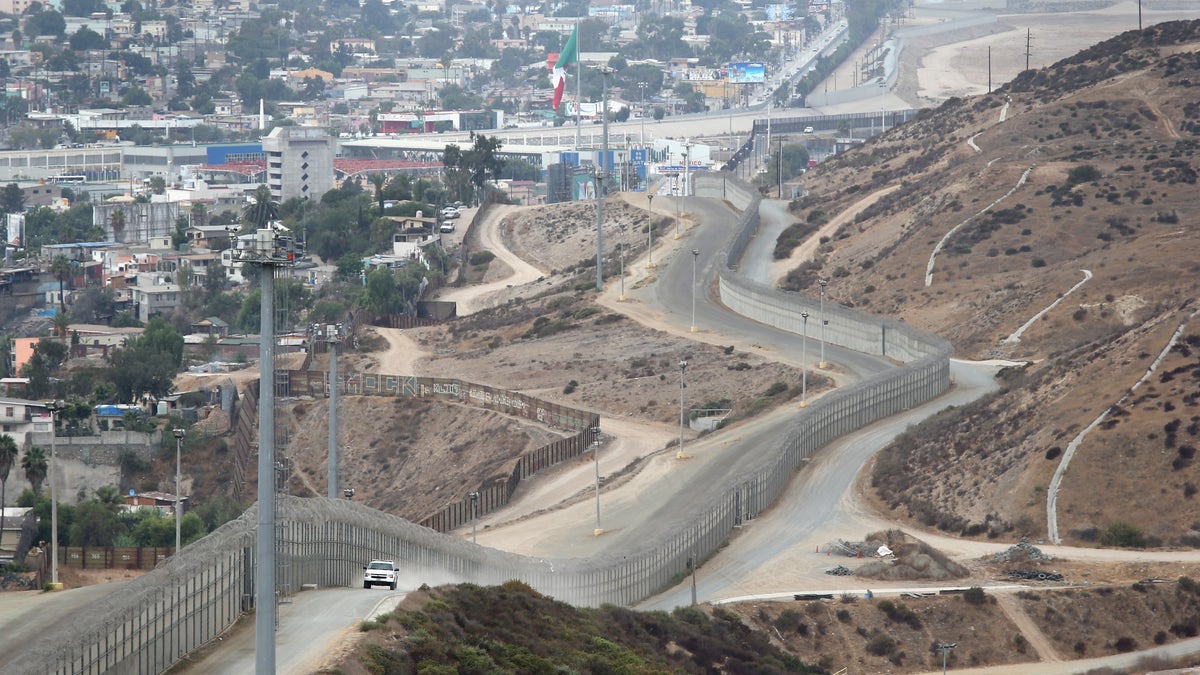
A stretch of the U.S.-Mexico border fence on October 3, 2013 near San Ysidro, California. (2013 Getty Images)
The recent theft of radioactive material from a commercial truck in Mexico is a nerve-wracking reminder of just how little knowledge we have of potentially dangerous materials traveling the highways of our southern neighbor and brings into question how well prepared we are to detect such material at our ports of entry.
The scary part is that authorities have no visibility on what the behavior of trucks or cars approaching our border looks like. Outside of sporadic intelligence reports, both the U.S. and Mexican authorities literally have no visibility until the vehicle arrives at the port entry.
With cutting edge aggregator software now available, shippers have more insight than ever about which ports are the most congested, when the best times to cross are and about the performance of their truck drivers.
U.S. border crossings are supposed to be equipped with sensors to prevent the passage of radioactive material through our ports. This is a good thing. Our ports of entry are our last line of defense preventing the entry of individuals or substances that could do us harm. But the Government Accountability Office in May shined a light on the failed procurement of what were supposed to be more sophisticated next generation detectors, a $200 million budget blunder by the Department of Homeland Security.
What if this truck had reached the U.S.-Mexico border? What if the container containing the material had been compromised? What if our Customs and Border Protection officers had been hurt, perhaps even mortally, by exposure to radioactive material?
Such scary scenarios should cause the U.S. and Mexico to continue to work on joint efforts to push cargo inspections away from the border ports and increase binational information sharing through tracking of merchandise that immediately warns if this type of theft is taking place.
- UN Nuclear Agency: Stolen Mexican Radioactive Material Could Be Used For ‘Dirty Bomb’
- Report: Six Hospital Patients Exposed To Radiation Eyed As Suspects In Theft Of ‘Dirty Bomb’ Material
- Mexico Uses Robot To Safely Remove ‘Dirty Bomb’ Material From Cornfield, Nuclear Agency Says
- Mexican Authorities Recover Stolen ‘Dirty Bomb’ Radioactive Material; Thieves Could Die From Exposure
Trusted shipper programs like the Customs-Trade Partnership Against Terrorism (C-TPAT) are designed to give CBP officers a peek into a shipper’s supply chain as part of an effort that is intended to result in preferential treatment at our congested ports of entry. That expedited service doesn’t always happen, but the motivation behind the effort – better service in exchange for better information – is sound.
But there are plenty of trucks that make their way to the border every day about which no one knows much at all, including who’s behind the wheel and what’s in the trailer.
Technology exists that can give our inspection agencies better situational awareness about the cargo making its way towards the U.S. border, removing the guesswork that sometimes characterizes truck inspections at the border. New applications are allowing companies to look at their crossing patterns, inspection rates and other key behavioral characteristics in a whole new way, but are also giving inspection agencies a leg up.
With cutting edge aggregator software now available, shippers have more insight than ever about which ports are the most congested, when the best times to cross are and about the performance of their truck drivers. For CBP, such technology can allow the agency to observe anomalous behavior, such as when trucks containing hazardous materials have been particularly slow-moving or have taken strangely circuitous routes.
Missing radioactive material across our southern border could and should be the impetus for the U.S. and Mexican governments to embrace the technological tools like traffic monitoring software and new radioactive sensors that could prevent such events in the future. Relying on old methods to confront new, dangerous challenges could leave us vulnerable.
We potentially dodged a very big bullet, not having preemptive intelligence on what is happening on the other side of the border is bad. Let’s not allow this lesson to go unheeded.
